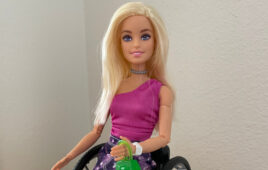
Freedom Concepts’ new DCP Pivot bike is designed to be more accessible (and transportable) for riders of all abilities.
It’s as easy as riding a bike.”
It’s a phrase that has caught on and stood the test of time, despite the fact that riding a bike can be pretty difficult for some. That’s where Freedom Concepts comes in.
Freedom Concepts introduces their brand as the creator of a “cycle of mobility” and a provider of independence, exhilaration and experience. For the customers they service, freedom doesn’t come all that easily.
Ken Vanstraelen, president of Freedom Concepts, founded the company in 1991 when he was tasked with creating a bike for a young boy with cerebral palsy. From there, the company evolved into what it is today: a worldwide leader in adaptive bicycles.
Now, they are introducing their most portable, customizable bicycle frame yet, the DCP Pivot.
Pivot into Mobility
“The DCP Pivot was the result of me looking at the original Discovery frame, primarily the 16-year-old and under frame, and realizing that we just kept adding more and more custom features to it,” Vanstraelen said. “This new frame sort of takes those features, that we call customcustom, and builds them into the new design to make it a little more streamlined looking.”
In an effort to create a frame that was more adjustable, customizable and portable, the Freedom Concepts team went to work on redesigning the original Discovery frame to include features that allow the rider to easily get in and out of the bike, adjust the seat for optimal hip-to-foot alignment, and detach the back wheels and seat for storage or transportation.
“With the existing line, we would have to go in and customize each thing, such as build your own seat,” Vanstraelen said. “But with this bike, our first design objective was to build more adjustability into the frame. For example, there is about 15° of range in the seat, so you can actually do the tilt right within the product itself. There are also different kinds of seat adjustments — not only height, but inseam wise as far as inward and outward or back and forth for alignment to the pedals. There’s quite a bit more designed into this bike.”
When Freedom Concepts set out to design the new frame, they had a list of five to six design elements that they wanted to incorporate into the frame to allow for maximum comfort and independence. One of the most important was allowing for maximum accessibility, including creating a more stress-free way to get on and off the product.
“Our secondary objective was making it more passthrough,” Vanstraelen said. “For a child with special needs getting on and off of a product like this can be challenging, so now it is quite a bit lower to the ground and it has a wider front frame area where you can get in and out easily.”
In addition to the features that make the bike more adjustable and pass-through, the team really wanted to create a frame that could be transferred more easily and stored in a smaller area.
“We wanted to make it more affordable to reach people and more accessible for different transportation means,” Vanstraelen said. “We are seeing a trend in which people are getting smaller cars and we wanted to make the bike more portable for families out there who just want to take their bikes to parks to ride.”
Not Just a Bike
Freedom Concepts’ products are so much more than regular bicycles. They allow for opportunity where there usually isn’t. To Vanstraelen, it’s about the benefits of the ride more than anything else.
“We look at our bikes as a rehab therapy tool as opposed to just a bike, so we try to always make sure we are working on them respectfully and with the utmost professionalism,” Vanstraelen said. “We are trying to make sure that the families, through the dealers or the therapists, understand all the opportunities within the product, not just exercise and mobility but also socially and other tremendous amount of benefits.”
 Levels IV and V, were excited to be involved in a school activity that allowed them to be independently mobile. One of the subjects even demonstrated a significant change in cardiorespiratory fitness.</p>
<p>“A lot of these kiddos and adults [use wheelchairs for mobility], but because riding is a non-weight bearing activity we know that we can get 95 if not 98 percent of people riding,” Vanstraelen said. “We have witnessed it before when a rider has never weight beared before, but is now physically pedaling the bike.”</p>
<h4>Rewarding Business</h4>
<p>We all remember our first time on a bike. It is exhilarating. The wind whistles past your ears and the ground becomes a blur as it moves quickly beneath you. It’s an experience everyone should have, and Freedom Concepts is trying to come close to completing that mission.</p>
<p>“We definitely want to continue to provide features that are life-changing,” Vanstraelen said. “And allow for even the most complex rehab kids and adults to experience riding.”</p>
<p><strong>1</strong> A school-based intervention to improve fitness and function in severe cerebral palsy: <a href=) A pilot study
A pilot study

